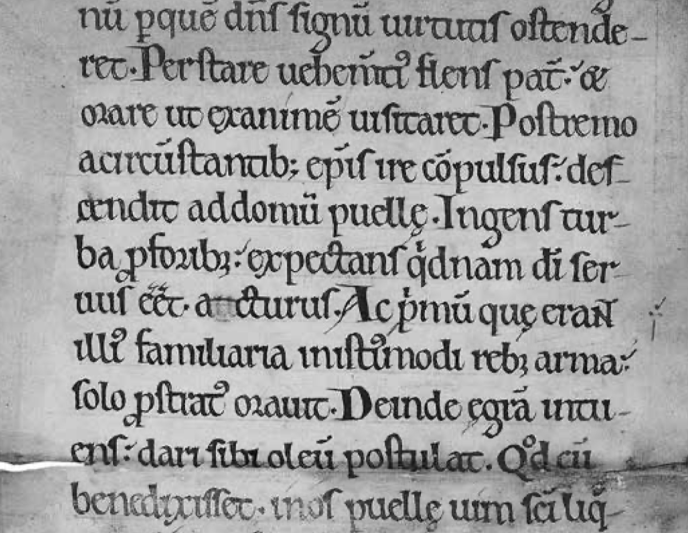David Thorold, Curator of Collections (Pre-Historic to Medieval), writes: St Albans grew to be the premier Benedictine Monastery in England and became renowned for its written works. Its library was one of the largest in the country, and the Monastery home to two of the country’s finest chroniclers, Matthew Paris and Thomas Walsingham. Chronicles, Missals, scientific tracts, classical works and humanist writings were produced or copied by monks or professional scribes working as part of St Albans’ Scriptorium. The dissolution of the monasteries led to the library of St Albans becoming spread far and wide. Many of its manuscripts now survive in various national and academic collections, and while the abbey’s chroniclers have become justly famous for their works there are no surviving examples of the scriptorium's work earlier than the 15th century in St Albans.
According to medieval accounts St Martin of Tours (c. 317–397) was a Roman soldier who converted to Christianity after an encounter with a half-naked beggar at the gate of the city of Amiens. Martin cut his cloak in half in order to share it with the beggar, who that night appeared to him in a dream-vision and revealed himself to be Christ.
Martin renounced the army and founded a hermitage in Ligugé that became the first monastery in Gaul. He was appointed bishop of Tours in 371, and then founded and became abbot of the abbey of Marmoutier. After his death, St Martin was associated with many miracles and he became the patron saint of France.
The remaining half of Martin’s cloak was used by the kings of France as a royal banner in war, and they swore sacred oaths upon it. The legend of St Martin’s cloak was first recorded in the Vita sancti Martini (Life of St Martin) of Sulpicius Severus (363–c. 425). Severus, a native of Aquitaine and a Christian, also wrote a chronicle of sacred history, but his Vita became especially popular in the middle ages and would have been an obvious candidate for the St Albans Library. This copy is in the hand of Scribe ‘B’ of St Albans, probably the head of the scriptorium at the time
This small rectangular cutting of 12 lines of Anglo-Caroline minuscule allows the museums service for the first time to display an example of the work of the scriptorium in the hand of one its own monks, demonstrating the style and skill of the Scriptorium team and providing a link to the works of the other acknowledged masters of the Abbey. It is to form a central part of an exhibition on the works of the Abbey running at the St Albans Museum + Gallery beginning in July 2021.
